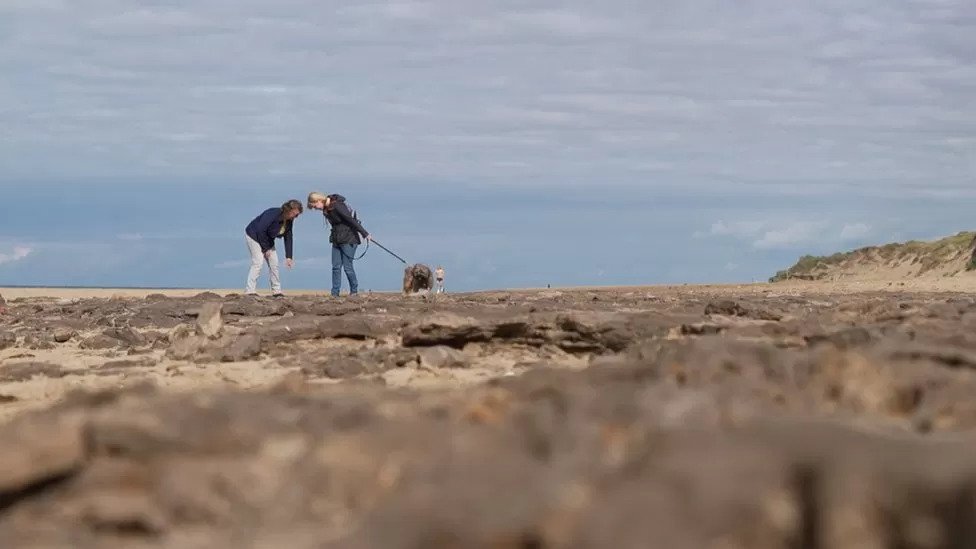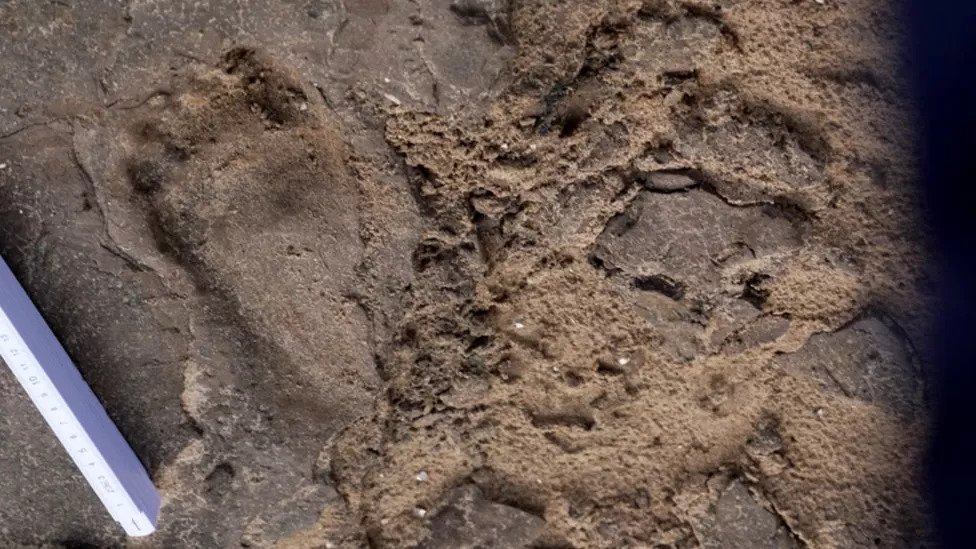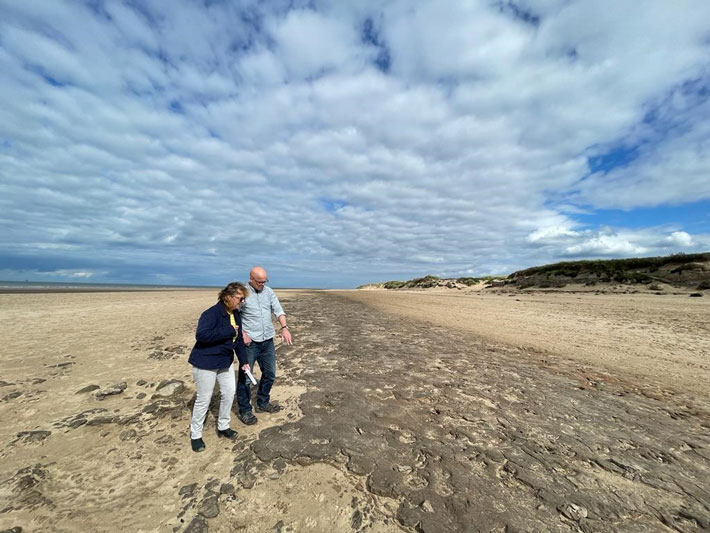Footprints Reflect Ecosystem Change in Prehistoric England

“It’s about 8,200 years old,” says Dr Alison Burns, pointing to a perfectly preserved human footprint pressed into ancient mud on Formby Beach. It is one of the hundreds of newly discovered ancient footprints here.
The sandy stretch of the northwest England coast is already known to be home to one of the largest collections of prehistoric animal tracks on Earth.
As well as adding to that collection, researchers found the oldest prints were formed much earlier than thought. The first date back almost 9,000 years and the youngest of the prints are medieval – about 1,000 years old.
These findings, published in the journal Nature Ecology and Evolution, tell the story of a coastal environment that transformed over thousands of years, as sea levels rapidly rose and humans settled permanently by the water.
The size and shape of the picture-perfect human footprint that Dr Burns has found suggest it belonged to a young man – perhaps a teenager. Strangely, this adolescent foot had the very distinct protrusion of a bunion on its little toe.

“It’s a tailor’s bunion,” Dr Burns explains. “They were habitually barefoot, so when they sat down, the little toe would have rubbed on the ground.”
The indentations, pressed into the mud as people and animals walked across stretches of tidal mud flat, were baked in the sun and buried for millennia.
“The oldest ones date to a time when the coastline was 30km away and the tidal muds here were teeming with animals – aurochs, herds of red deer, roe deer and also predators like wolves and lynx that are now extinct in the UK,” explains Prof Jamie Woodward from the University of Manchester.
He and Dr Burns, along with their colleagues, verified the ages of the tracks by carbon-dating seeds extracted from cores of this ancient, compressed mud.
Altogether there are 31 footprint beds, which point to a period of dramatic change in this ecosystem. “Up to about 6,000 years ago, there was a very diverse landscape with all those animals,” says Prof Woodward. “Then after about 5,500 years ago, we see lots of human footprints, some deer and dogs, but not much else.
“So what we’re seeing – through the footprints – is a landscape transforming with sea-level rise, and also with the arrival of agriculture that probably put a lot more pressure on this ecosystem.”
Dr Burns, who led the study, explains that as the sea erodes away layers of this ancient, compressed mud, it can reveal new layers of footprints. The deeper the layers, the earlier they were formed.

Footsteps took thousands – even millions of years ago – have left tracks in many parts of the UK’s coastline, which scientists have been able to find, study and turn into a deeper understanding of our prehistory.
In May 2013, a storm exposed some indentations at Happisburgh in Norfolk, which researchers eventually confirmed to be 900,000-year-old human footprints. In 2015, Edinburgh University researchers found trackways on the Isle of Skye, left 170 million years ago by the largest dinosaurs ever to walk the Earth.
But the Formby footprints are particularly fragile.
“They can be washed away within weeks of being exposed,” Dr Burns explains. “Some of them will be reburied and preserved for another few millennia – it’s all a part of this changing coastline.”
The coast at Formby is transforming particularly quickly – its famous dunes are in constant motion – rolling inland by an estimated 4m every year. At one spot on the expansive beach, you can see the remnants of the old visitor’s car park that’s now been rebuilt further inland.
“What’s amazing here is that we’ve tracked a major ecosystem change solely by looking at the footprint record – with no bones or fossils.
“That could paint a picture for the future of our coastal biodiversity hotspots,” adds Prof Woodward.
“Many of the biodiversity hotspots now are in coastal environments. And those environments are threatened by rapid sea-level rise now, so there are lessons we can learn about how habitats can become degraded and disconnected, which will affect the animals that can survive there.”





